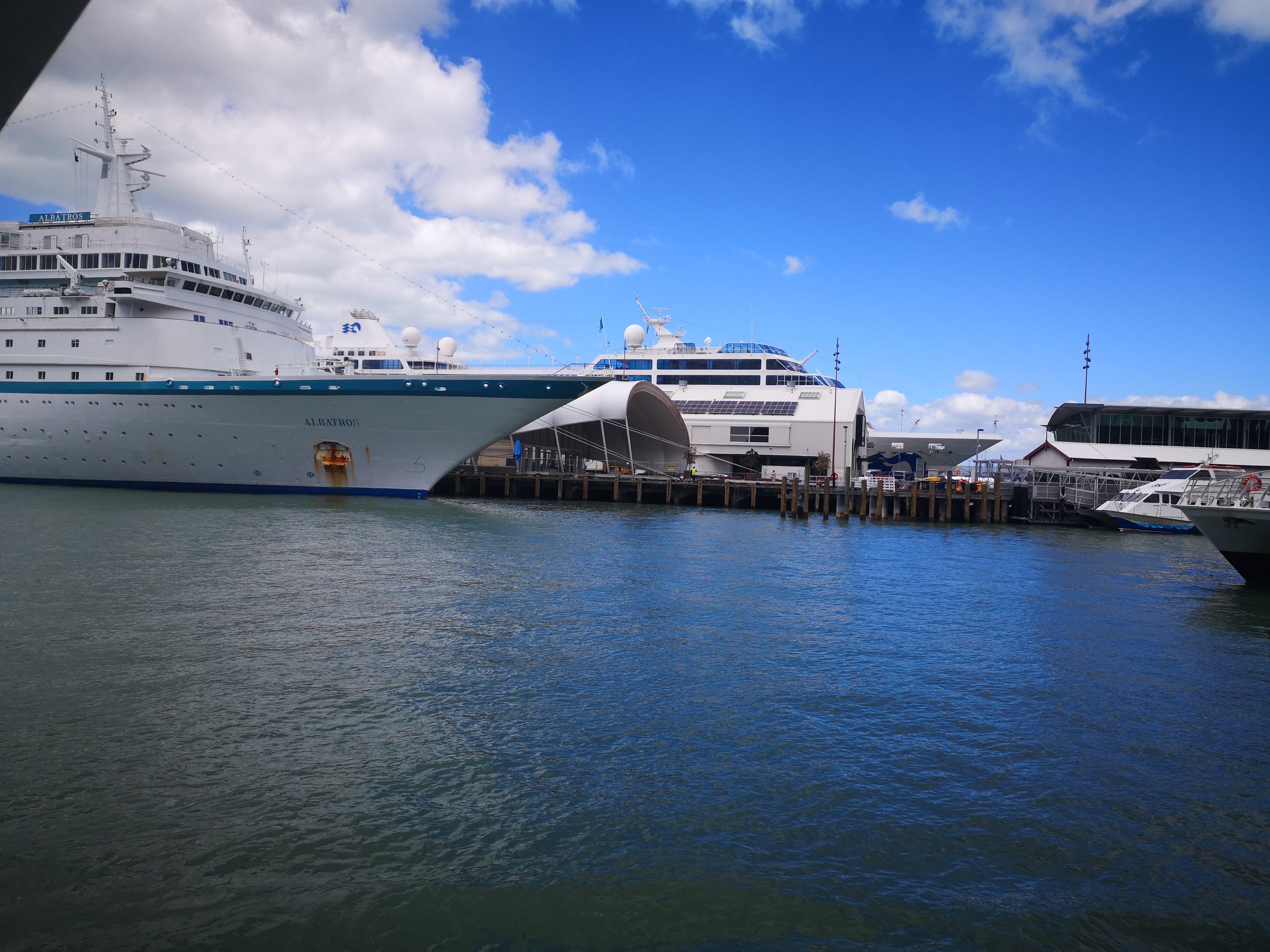A funny thing happened on the way to the airport – the trams versus trains debate

People and Trams – Angers, France (Chan collection.)
Trams are for mass transit rather than rapid transit.
Readers who’ve followed my political career will be aware that I am a long time advocate for ‘light rail’ – by that I mean trams, sleek high-tech versions of which are rolling out on city streets across Europe and North America – and of course Australia. (In this article I will use the American term ‘light rail’ and European word ‘trams’ interchangeably]. I also support heritage trams – as the chairman of the Auckland Regional Council I was responsible for getting the popular ‘place shaping’ heritage tramway built in the Wynyard Quarter. The trouble is – the Wynyard tramway was never meant to stay in the Wynyard Quarter – it was to be extended along the waterfront to the Britomart Transport Centre using both heritage trams and state-of-the-art modern trams to pick up cruise ship visitors on Princes and Queens Wharf while shuttling weekday commuters from Britomart to their new Wynyard Quarter offices. Despite overwhelming public support for this idea in public submissions to the Waterfront Plan in 2012 (43% of public submissions responded with ‘do now’, 30% said ‘do soon’, 13% said ‘do later’, 13% said ‘don’t do’ – that is 73% or even 86% support) – the waterfront extension has been blocked, essentially due to opposition within the Super City bureaucracies. Whatever the real reason behind this, what has become clear is that the bureaucrats don’t appear to fully appreciate the ‘city building’ benefits of trams, which go together with people and civic spaces much better than buses (or indeed for that matter trains). Blocking future trams on Quay Street and insisting they run on Customs Street along with the North Shore buses and the rest of the heavier traffic planned for this corridor misses a unique opportunity to showcase both light rail and Auckland’s waterfront while servicing the growing number of cruise ship visitors ferry users, waterfront hotels, apartments and entertainment areas.
Its been just on 60 years since the Auckland’s highly successful 72 km electric tramway which carried over 80 million passengers per year – when Auckland’s population was less than 300,000 was terminated, trams bulldozed, lines pulled down and tracks dug up. Aucklanders have been paying dearly for that blunder ever since. Today with a population of 1.5 million Auckland’s total public transport patronage is still less than that what it was in 1956. The long 60 year interregnum also means today’s transport managers despite being recent converts to light rail are still coming to terms with the mode – both its strengths and for that matter its limitations.
Recently a debate has broken out involving trams (the future use of) to the airport. In this case officialdom (Auckland Transport management) is pushing hard for trams as our future rapid transit option between the downtown CBD and Auckland International Airport. Up until recently there was an agreement between the parties (Auckland Council, Auckland Transport, NZTA, KiwiRail and Auckland International Airport) reached in 2011 to extend electric trains from the Onehunga to the airport and then eventually southeast to the main trunk line at Puhinui. Work to start some time in the 2020s.
However a business case has recently been produced by Auckland Transport indicating a tramway extending from the end of Dominion Road to the airport would be significantly cheaper than the rail option from Onehunga. I have serious reservations about the figures used and some of the assumptions. Without going into detail, probably the most glaring weakness in the ‘business case’ is that electric rail to Onehunga (only 10 km from the airport) actually exists – unlike the Dominion Road tramway which at this stage exists only in the imagination. My concern is that just as with the Quay Street situation where officialdom doesn’t appear to ‘get’ the potential benefits of light rail – the airport debate suggests it also may not understand its limitations.
So lets briefly sum up the case for and against trams and trains to the airport. Trams have the benefit of being a flexible and very efficient form of public transport. Modern electric trams can service busy city streets, like buses, (‘street car’ mode), but can carry much more people (12,000 per hour) and in greater comfort (and more quietly) than diesel buses which can carry 2,500 per hour. Trams can also perform like trains on their own dedicated corridors. But electric trains (commuter rail) carry even more people (48,000 per hour) and go even faster. This is not just due to the superior power of EMUs, train stations tend to be spaced between one to three kilometres apart whereas tram stops are spaced only 350 to 800m apart. Trams on Dominion Road I am sure will be a great boon in the future for people and businesses in the Dominion Road area, but looking at it from the passengers point of view (often overlooked) for weary travellers and their baggage, keen on getting to the central city, multiple tram stops are not something one imagines many will appreciate. Even less so in the case of anxious travellers wanting to get to the airport. When I visited the Gold Coast last year to inspect their brand new tramway, the managers emphasised to me not to forget a key point – light rail mean ‘mass transit’ – not ‘rapid transit’.
Its an intriguing debate but it will need to be settled by next June when Auckland International Airport will be making key decisions regarding its second runway and new terminals. The stakeholder steering group of the multi-party airport rail planning process (which carries the hopeful acronym SMART) which I chair has recommended that a working party made up of technical experts from the key agencies and the airport company, work together to come up with the best option for Auckland and our vitally important international airport. I will keep you posted.
Mike Lee is the Auckland Councillor for Waitemata & Gulf Ward and the council appointed chair of the SMART (Southwestern Multi-modal Airport Rapid Transit) Stakeholders Steering Group
This article is featured in the February 2016 edition of Ponsonby News.




I believe that combined light / heavy rail systems are starting to appear. So, what about using light rail to extent the Onehunga line? Light rail vehicles can travel on heavy rail tracks, and they don’t have to have stops close together – could in fact be rapid transit without having to dig up Dominion Road or pay for heavy rail to the airport …
Bob, Dominion Road will be ‘dug up’ regardless. Trams are coming back to Auckland at some stage. Whether they should continue on from Dominion Road to the airport, or whether we should extend the train line from Onehunga as originaly planned, is the debate.
The best option for operational and flexibility is to use the current heavy rail option to the airport.
No need to purchase another set of rolling stock and less distruptions to the travelling public.
Trains to the airport and can start it’s journey from any part of the rail network and back to Britomart without changing trains and disruptions. The trains can also run to the North Shore and back through to Britomart and then straight to the airport.
Trams are limited to what they can do and do not have the speed, flexibility and coverage like trains do. Trams would only have one route and be stuck there and not be able to service other parts of the City like trains can.
People only want one mode of transport and not multiple modes requiring to change from mode to next.
Make provision to allow the intercity rail terminal to be located at the airport as well. A line from Paerata will have the advantage of moving intercity trains away from the commuter services. Gives potential to run tourist services to Rotorua as well as commuter service to Waikato.